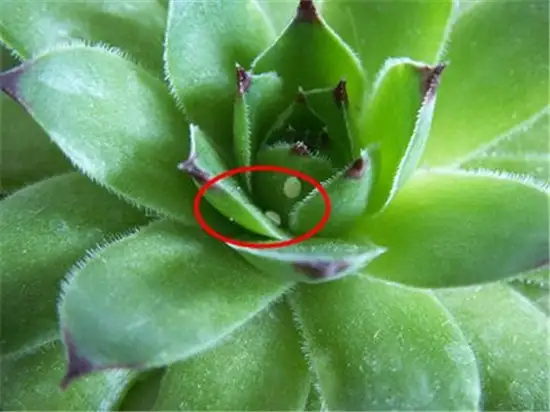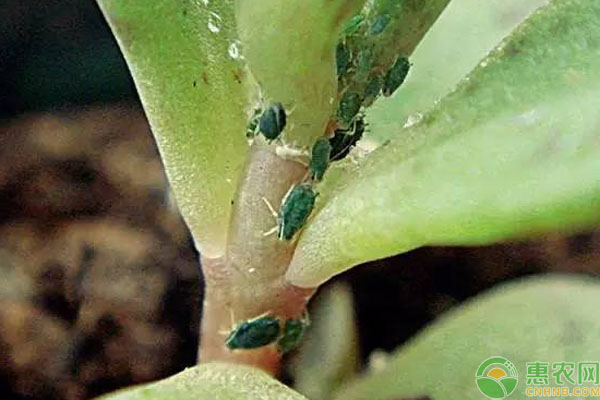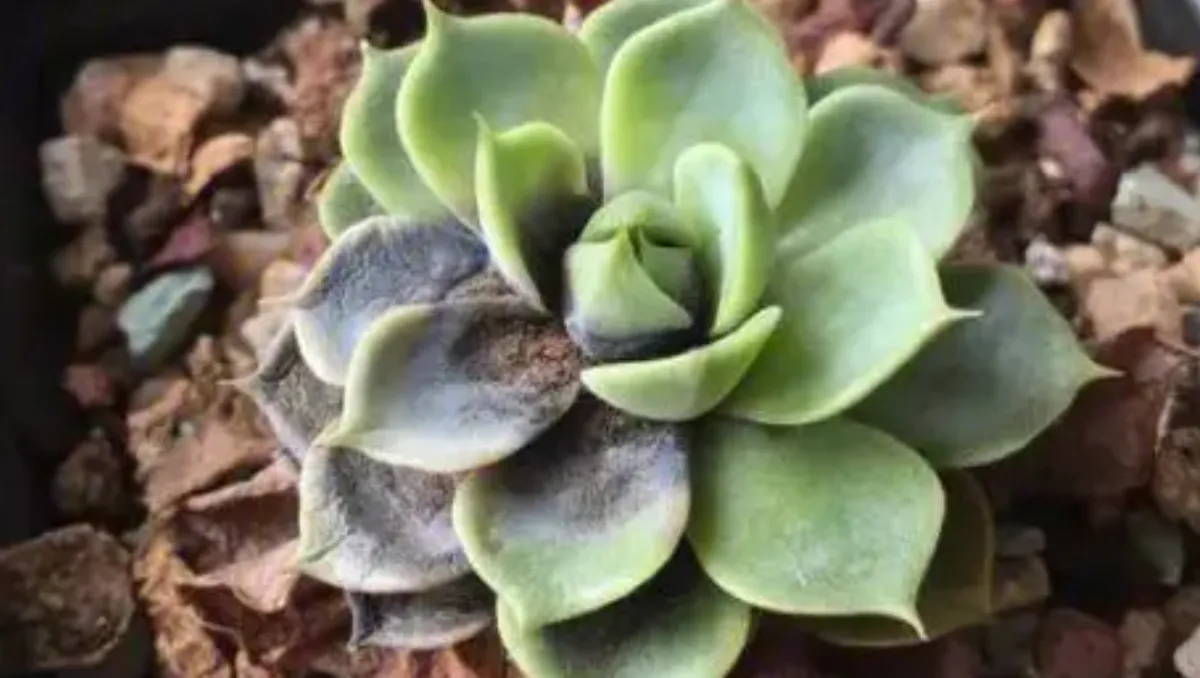Succulent Plant Care 101: Conquering Common Diseases and Pests

Succulent Plants: Controlling Pests and Diseases
Succulent plants🪴are known for their resilience and easy care. However, there are situations where they can fall victim to pests and diseases, significantly compromising their aesthetic appeal, especially for those pursuing an exquisite display.
For growers, these issues are like thorns on their side, demanding swift action. Fortunately, controlling and preventing diseases and pests in succulent plants is relatively manageable. Nevertheless, long-term indoor cultivation, coupled with high temperatures, 💦wet conditions, and poor ventilation, can increase the likelihood of infestations.
In this article, we will explore common pests and diseases that afflict succulent plants and provide practical solutions using simple methods. This guide is tailored for succulent enthusiasts and beginners alike, aiming to help you maintain the health and visual allure of your beloved succulent plants.
Common Pests:🐜
Usually, there are four prevalent pests: red spider mites, mealybugs, whiteflies, and aphids.
Red Spider Mites.🕷️
First, let's talk about red spider mites, which primarily affect plants in the Crassulaceae, Euphorbiaceae, Asteraceae, and Liliaceae families. They use their mouthparts to suck the sap from the tender stems and leaves of succulent plants. Infested leaves exhibit yellow-brown spots or become dry and fall off. These scars often remain and do not fade over time. To determine if you have red spider mites, check the underside of the leaves for spider webs and tiny red/white/dark-colored insects. If present, it is likely red spider mites.

If you're unable to purchase appropriate insecticides or prefer not to use them in a household environment (especially when there are pets present), you can try the following three methods to deal with red spider mites on your succulent plants:
- Homemade Chili Pepper Spray: Making chili pepper spray is simple. Just crush fresh chili peppers and garlic, then mix them with water. However, the effectiveness is not as potent as commercial insecticides, and it is more suitable for preventive use. Additionally, you can dilute soap solution with water at a ratio of 50:1 or tobacco solution with water at a ratio of 25:1 for spraying and killing red spider mites.
- Mineral Oil: Using mineral oil, such as orange peel extract, can help control red spider mites. Mineral oil suffocates the mites by sealing off their spiracles, leading to their physical demise. Red spider mites do not develop resistance to mineral oil. Moreover, mineral oil can also be effective against other pests, such as scale insects and sooty mold, making it a versatile option.
- Insecticides: (Recommended for use in areas inaccessible to pets) Generally, you can find common insecticides at local garden centers or tool stores. However, please note that red spider mites can develop resistance to insecticides over time if used excessively, leading to reduced efficacy.
Scale Insects.
Next, let's talk about scale insects. Scale insects pose a significant threat and often affect succulent plants with tightly packed leaves, such as plants in the Agave and Haworthia genera. They feed on the sap of stems and leaves, leading to poor plant growth and, in severe cases, wilting and death. Scale insects have an earlier peak infestation period compared to red spider mites and often reproduce in large numbers during early spring. However, their infestation can be more localized, often concentrated on a few plants. You may find one plant heavily infested with scale insects while neighboring plants remain unaffected.

To deal with scale insects, there are a few methods you can use, including physical removal or the use of insecticides. Here are some approaches:
- Physical Removal: Use a needle, toothpick, or tweezers to individually remove the scales. This method is suitable when the infestation is not severe and primarily located on stems or large scales on the underside of leaves.
- Water Spray: Use a high-pressure spray bottle or a strong stream of water from a tap to spray the affected areas. If the water flow is strong enough, it can effectively dislodge and wash away the scales.
- Alcohol Method: Purchase disinfectant alcohol with a concentration of 75% or higher from a pharmacy. Dip a brush in the alcohol and repeatedly wipe the infested areas. This method can remove scales thoroughly and effectively. If the leaves are densely packed and difficult to wipe, you can directly pour alcohol onto the heavily infested areas. Generally, the scales that come into contact with the alcohol will die. Continue applying alcohol if scales are still present after a few days. This method is suitable for a small number of succulents with severe scale infestations.
- Insecticides: (Recommended for use in areas inaccessible to pets or when succulents are kept outdoors) You can purchase general insecticides from local garden centers or tool stores. However, similar to red spider mites, scale insects can develop resistance to insecticides. It is advisable to dilute the insecticide to reduce the risk of resistance.
Remember to choose the method that best suits your situation and consider the safety of your pets and the indoor environment when applying these treatments.
Whiteflies.🦋
Whiteflies pose a relatively minor threat and are frequently found on shrubby succulent plants in the Euphorbiaceae family, such as Pachypodium, Euphorbia milii (Crown of Thorns), Kalanchoe thyrsiflora (Paddle Plant), and Acalypha wilkesiana (Copperleaf). Whiteflies feed on the sap from the underside of leaves, causing leaf yellowing and premature leaf drop. They can also trigger the development of sooty mold, resulting in unsightly black powder on the stems and leaves. This directly impacts the aesthetic value of the plants.
Controlling whiteflies can be relatively simple compared to other pests. Here are some methods to manage whiteflies:
- Improve Ventilation: In the early stages of infestation, enhancing air circulation by increasing ventilation or using fans can help deter whiteflies. Their delicate wings make it difficult for them to remain on plants in windy conditions.
- Sticky Traps: If the infestation is not severe, using sticky traps can be effective in capturing whiteflies. These traps attract and trap the insects, helping to reduce their population.
- Alcohol Method: Similarly to other pests, using alcohol with a concentration of 75% or higher is an environmentally friendly and non-toxic way to eliminate whiteflies. Dip a brush or cotton swab into the alcohol and directly apply it to the whiteflies. This method can effectively kill pests.
- Insecticides: Common insecticides can also be effective in thoroughly eliminating whiteflies. Follow the instructions on the insecticide product and apply it as directed to target the whiteflies. Be sure to choose an insecticide suitable for succulent plants and follow safety guidelines.
Aphids.
Aphids primarily infest succulent plants in the Crassulaceae and Asteraceae families. They feed on the sap of the tender parts of the plants, leading to weakened growth. Additionally, the honeydew secreted by aphids can attract ants, which can further harm the plants.

The methods for controlling aphids are similar to those used for other pests, involving physical removal or chemical treatments. Here are some approaches for dealing with aphids:
- Physical Removal: If the infestation is not severe, you can use tweezers to remove aphids from your succulent plants. Simply pick them off one by one or wash them away with water.
- Diluted Laundry Detergent Solution: For succulents infested with a moderate number of aphids, you can use a diluted laundry detergent solution. Mix laundry detergent with water at a ratio of 1:20 (note: the detergent solution may potentially harm the succulents, so it's advisable to test it on a small area before applying it extensively).
- Insecticides: If the aphid infestation is severe and other methods have not been effective, you can use general-purpose insecticides. Follow the instructions on the insecticide product and apply it as directed to target the aphids. Choose an insecticide suitable for succulent plants and adhere to safety guidelines.
Common Diseases:
The above are several common pests and their treatment methods. Now, let's discuss a few diseases that succulent plants are prone to:
Red Mold Disease
Red Mold Disease is a bacterial disease and one of the main diseases affecting succulent plants. It primarily affects succulents with tuberous structures. The disease enters through wounds in the roots, causing reddish-brown lesions to appear on the tubers. Over time, the affected areas may rot and lead to the death of the plant.
The main approach to managing red mold disease is prevention, such as adding fungicides to the soil before planting. If the pathogen is already present, here are the steps to follow:
- Remove infected leaves: Remove the infected leaves and wait for the wounds to dry completely before proceeding. Use clean scissors or a knife for trimming and apply disinfectant powder to the trimmed wounds.
- Use disinfectant powder: Choose an appropriate disinfectant powder, such as sulfur powder, and apply it according to the instructions. Applying disinfectant powder helps inhibit the growth and spread of the pathogen.
Anthracnose Disease
Anthracnose Disease is a significant disease that affects succulent plants. It is a fungal disease commonly occurring during hot and humid seasons, especially in the high-temperature and high-humidity periods of the rainy season. Excessive nitrogen fertilizer application can also contribute to its occurrence.

In the early stages of the disease, small brown spots appear on the leaves, which later expand into circular or elliptical shapes. The affected areas gradually dry out, and in severe cases, the entire plant may be affected.
Treatment for Anthracnose in Succulent Plants:
- Remove infected leaves: Trim off the diseased leaves, and if the infection is severe, cut away the rotten parts. Apply a fungicide such as mancozeb or dust the wound with charcoal powder to help dry out the wound quickly.
- Ensure good ventilation: Provide adequate airflow around the plants to reduce humidity levels. This can be achieved by placing the succulents in a well-ventilated area or using a fan to improve air circulation.
- Reduce environmental humidity: Anthracnose thrives in moist conditions, so it's essential to minimize humidity levels. Avoid overwatering the plants and make sure the soil has proper drainage to prevent waterlogging.
- Avoid reusing old soil: It is best not to reuse the old soil for succulents affected by anthracnose. If you must reuse it, thoroughly sterilize the soil to eliminate any remaining pathogens before using it again.
Rust Disease
Rust Disease is a common disease that occurs in succulent plants of the Euphorbiaceae family. It manifests as large rust-brown lesions on the stems of the plants, starting from the base of the stem and expanding upwards. In severe cases, the stems can be completely covered with these lesions.
The main causes of rust disease in succulent plants are improper cultivation practices, such as using poor-quality or nutrient-deficient soil, inadequate ventilation in potted plants over a long period, direct watering of the top of the plants, and unsuitable environmental conditions that promote the invasion of rust fungi.
Here are the methods to treat rust disease in succulent plants:
- Prune infected branches: Trim away the infected branches and wait for new growth to emerge. Ensure to use clean pruning shears and disinfect them before and after removing the diseased branches to prevent the spread of the pathogen.
- Use fungicides: If the disease is severe, you can use suitable fungicides for spraying. Choose a fungicide specifically formulated for succulent plants and follow the instructions for application. This can help effectively cure the plants and suppress the spread of the pathogen.
Physiological Disorders
Physiological Disorders refer to the disorders in succulent plants caused by adverse growing conditions. Factors such as intense sunlight exposure, severe lack of light, sudden low temperatures, and prolonged drought can lead to various symptoms including stem and leaf scorching, browning, elongated growth, tissue damage, and wilting of the apical portion.




The fundamental measure to address physiological disorders is to improve the cultivation conditions. This includes providing appropriate lighting conditions, protecting plants from extreme sunlight or insufficient light, ensuring suitable temperatures, and maintaining proper watering practices. By creating a favorable growing environment, the occurrence of physiological disorders in succulent plants can be minimized.
Conclusion
Controlling pests and diseases in succulent plants is essential for maintaining their health and visual appeal. By being aware of common pests like red spider mites, scale insects, whiteflies, and aphids, and understanding effective treatment methods such as physical removal, homemade remedies, and insecticides, you can protect your succulent plants from infestations.
Additionally, being mindful of diseases like red mold disease, anthracnose, rust disease, and physiological disorders allows you to take preventive measures and implement appropriate treatments to preserve the well-being of your succulents.
Remember to monitor your plants regularly, maintain proper cultivation practices, and provide a conducive growing environment. With these efforts, you can ensure the longevity and beauty of your beloved succulent collection.

lulu succulent .Thank you so much for your valuable caring information.
They are very helpful